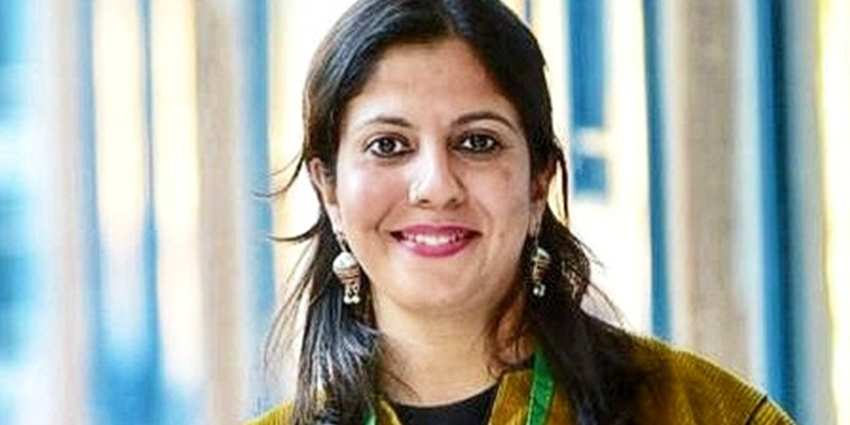Dr Tabeenah Anjum Qureshi is a journalist and an eminent visual storyteller. Born and brought up in Kashmir, she pursued her master’s degree and PhD in Jaipur. According to her, Jaipur is her second home.
She followed her dream for photography and won the National Award in photography conferred by the Ministry of Information and Broadcasting, Government of India. She is also a recipient of Maharaja Sawai Ram Singh II Award (2017) for excellence in photography. The camera is her companion and she carries it whenever she ventures out. She has reported for Deccan Herald, Rajasthan Patrika and DNA.
Dr Tabeenah Anjum Qureshi explained the importance of visuals in times of Covid-19. Some of the visuals may also haunt us. She also said that visual media is the strongest media in times of Covid-19 pandemic besides print media. During this lockdown period, people have seen many such visuals through traditional or social media, but photographers remained anonymous many times. Photographs or visuals are very important and even powerful tools to give messages. One amazing click posted on social media reaches hundreds of thousands of people within a short period of time, and people across the world get to know about it.
Understanding the power of picture or visual is very important as rightfully quoted by Dr Qureshi, “Visuals won’t fade away.” She also said that the photojournalist community is dealing with a lot of uncertainty, such as safety concerns and many more.
Dr Qureshi said, “Many journalists tested positive for Covid-19 and among all, most affected were the photographers. They took it as their responsibility for covering every moment available, as the people should be made aware of the effects of Covid-19.”
Dr Qureshi pointed out some precautionary measures that photojournalists on the field should take– implementing the initiative of social distancing, maintaining very little contact with the subject, avoiding crowded places etc. Using a good lens can help them stay away from the affected while capturing good snaps of the subject.
Dr Qureshi further showed some more visuals on the impact of Covid-19 and subsequent lockdown in India. The first visual was of a middle-aged woman getting tested by a health worker with an infrared thermometer. The next image was of a man on whom doctors performed a swab test in a newly installed sample kiosk. There were visuals of a swab test at Dharavi in Mumbai. She explained the importance of this visual as Dharavi has turned out to be a big hotspot for Covid-19. The next one is a perfect visual of a health-worker scanning a resident with an infrared thermometer to check her temperature in New Delhi. Then, there were images that showed the health-workers entering a residential area of Mumbai on April 20, 2020, to do random testing to understand the spread of the coronavirus in this lockdown.
Dr Qureshi also showed visuals of a family creating sound with utensils during the Janata Curfew Thali Bajao and Tali Bajao episode. She explained how this made the people connected. It also motivated health officials. Through the next visual image, she showed the picture of Kolkata during the lockdown period that once glittered with people on its roads, now has deserted, empty streets with hardly any people. Then there was this impeccable photograph that shows a bride and groom in their traditional wear on the occasion of their wedding, wearing masks to avoid any exposure to Covid-19.
Then there were numerous photographs depicting the plight of the migrant workers and their families. These portray the journey of migrants on their foot in a long queue without proper food and supplies but maintaining the initiatives of social distancing in the hope of returning to their homes to meet their loved ones. She tried to cover all aspects of life in lockdown with visuals and showed some compelling images of wild animals roaming in highways, traffic crossings without any fear of being harmed.
Dr Tabeenah Anjum Qureshi explained an incident where there were four women she met on the road. She heard their stories and found that they had three things in common:
– They are mothers,
– They are resilient,
– They are migrants.
Their destinations were far away, yet they braved the journey on foot for their children’s sake.
Dr Qureshi also showed some silver lining visuals during the time of Covid-19, which depict that nature is functioning in its rhythm amid lockdown, pandemic, and human plights.
The author, Ayan Shyam Roy is associated with Adamas University Media School.







